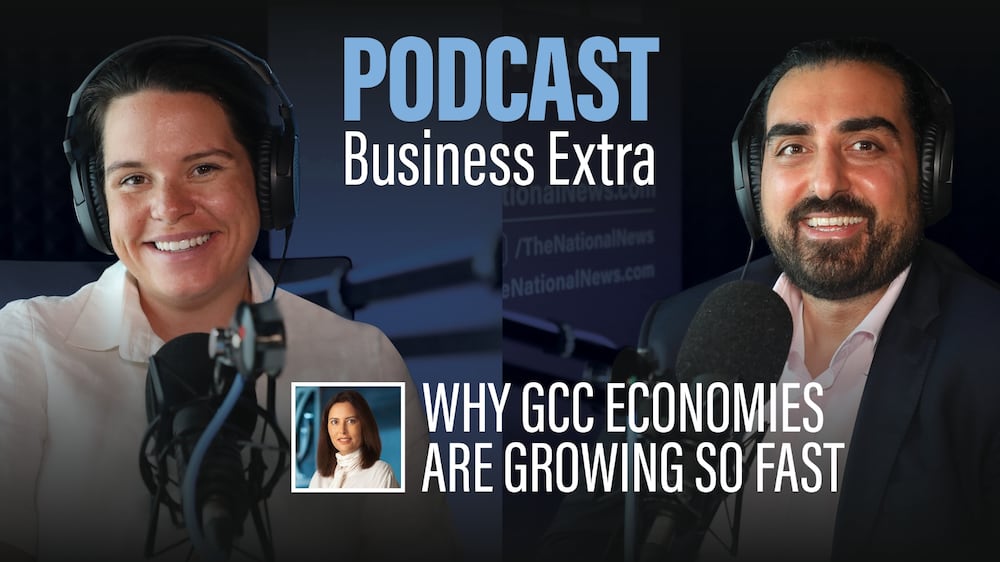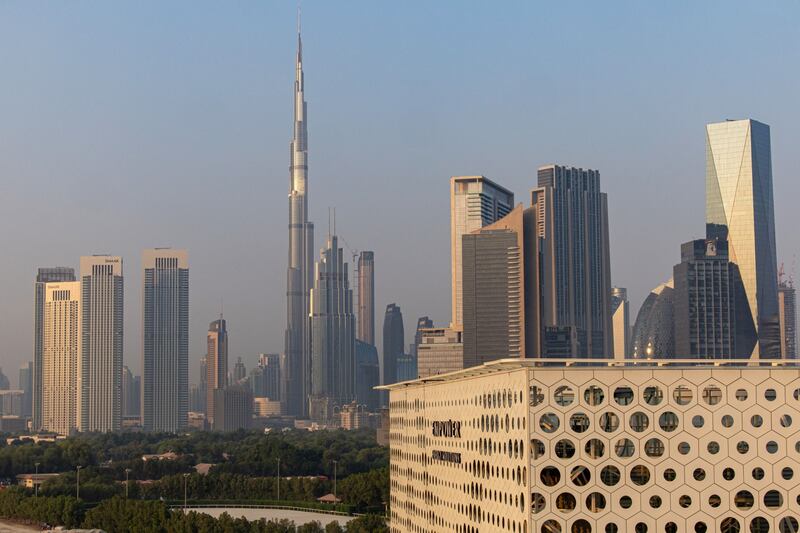The central banks of the UAE, Saudi Arabia, Bahrain, Kuwait and Qatar raised their benchmark borrowing rates after the US Federal Reserve raised its key interest rate for the fifth time this year to slash surging inflation and restore price stability.
The Fed on Wednesday increased the policy rate by 75 basis points (bps), its third consecutive three-quarters of a percentage point increase.
The latest move by the US central bank came after consumer prices rose by 8.3 per cent in August, exceeding economists' expectations of 8.1 per cent and above the Fed’s 2 per cent target.
After being criticised for acting too slowly to curb rising prices and being behind the inflation curve, the Fed has shifted gears and is doubling down on higher interest rates to bring consumer prices down.
The Fed signalled further rate raises were possible, stating that it “anticipates that ongoing increases in the target range will be appropriate”.
Most central banks in the GCC follow the Fed's policy rate moves because their currencies are pegged to the US dollar.
In line with its “objective of maintaining monetary and financial stability, and in light of recent global developments”, the Saudi Central Bank, better known as Sama, raised its repurchase agreement (repo) rate by three quarters of a percentage point to 3.75 per cent and its reverse repo rate by a similar margin to 3.25 per cent.
Annual inflation in the kingdom, the Arab world's largest economy, edged higher to 3 per cent in August from the same month a year earlier, driven by rising food and beverage prices, as well as increasing transport costs. Inflation edged up from an annual 2.7 per cent increase recorded in July and June's 2.3 per cent, according to Saudi Arabia’s General Authority for Statistics.
The kingdom’s economy is set to grow at the quickest pace in a decade and could be one of the world’s fastest-growing economies this year, according to the International Monetary Fund.
Saudi Arabia’s economy grew 12.2 per cent in the second quarter, exceeding initial estimates and registering the fastest expansion since the third quarter of 2011.
Globally, the IMF forecasts inflation to reach 5.7 per cent in advanced economies and 8.7 per cent in emerging market and developing economies this year. The fund expects inflation in Saudi Arabia to remain contained at 2.8 per cent in 2022 as its central bank tightens monetary policy in line with the US Federal Reserve.
The Central Bank of the UAE raised its benchmark base rate for its overnight deposit facility (ODF) by three quarters of a percentage point to 3.15 per cent. It maintained the rate applicable to borrowing short-term liquidity from the regulator through all standing credit facilities at 50 bps above the base rate, the CBUAE said on Wednesday.
The base rate, which is anchored to the Fed's interest on reserve balances (IORB), signals the general stance of the CBUAE's monetary policy and provides an effective interest rate floor for overnight money market rates.
Inflation in the UAE is relatively low when compared with rates in other parts of the world. The consumer price index increased by 3.4 per cent during the first quarter of 2022, compared with 0.6 per cent and 2.3 per cent in the third and fourth quarters of 2021, respectively.
Inflation in the Emirates is expected to reach 5.6 per cent in 2022 and 4.2 per cent in 2023, according to the latest data from the CBUAE.
The UAE economy is set to expand by an annual 5.4 per cent this year and post its strongest annual expansion since 2011 after it grew by 8.4 per cent in the first three months of this year on higher oil prices and measures to mitigate the impact of the Covid-19 pandemic, according the CBUAE.
The economy expanded by 3.8 per cent in 2021 and is expected to grow by 4.2 per cent in 2023.
Why GCC economies are growing so fast

The Central Bank of Kuwait (CBK) also increased its discount rate by 0.25 bps to 3.00 per cent. The CBK said it also changed the rates of monetary policy instruments by varying percentages for the entire interest rate yield curve, including repurchases, CBK bonds and tawarruq, term deposits, direct intervention instruments, as well as public debt instruments.
The Central Bank of Bahrain (CBB) increased its key rate on one-week deposits by 75 basis points to 4.00 per cent “to ensure the smooth functioning of the money markets” in the kingdom.
The interest rate on overnight deposits was also raised by three quarters of a percentage point to 3.75 per cent, and the interest rate on four-week deposits by 75 bps to 4.75 per cent, the CBB said.
The Bahraini regulator also raised the interest rate applicable to its lending facilities to retail banks in the kingdom by three quarters of a percentage point to 5.25 per cent.
The Central Bank of Qatar raised its repo rate by 75 bps to 4.00 per cent. It raised its deposit rate by three quarters of a percentage point to 3.75 per cent and the lending rate by an equal amount to 4.50 per cent.
In March, the Fed raised rates by a quarter percentage point for the first time since December 2018, after keeping them near zero to soften the impact of Covid-19 on the economy.
Surging oil and gas prices, exacerbated by Russia’s war in Ukraine, have fed into rising inflation.
Brent, the benchmark for more than two thirds of the world's crude, soared to a notch under $140 a barrel in March after the start of the Russia-Ukraine war.
While oil prices have given up their gains and are down about 20 per cent since early June, they are still trading near $90 a barrel.
The impact of higher energy prices and shrinking consumer spending power on economic growth has also hit US stocks, plunging markets into bear territory.
The Russia-Ukraine conflict, coupled with stop-and-go restrictions from the Covid-19 pandemic, along with supply chains and global trade which are still recovering, prompted the World Bank to slash its 2022 growth forecast for the global economy for the second time this year to 2.9 per cent, from 3.2 per cent.
The IMF has cut its growth forecast for the global economy to 3.6 per cent for 2022 and 2023, while the Institute of International Finance lowered its estimate to 2.3 per cent.
After the Fed stepped in with a series of monetary measures after the onset of the pandemic, it is now engaged in a delicate balancing act as excessive monetary tightening risks tipping the world's largest economy into a recession, which could reverberate globally.
“As central banks across the world simultaneously hike interest rates in response to inflation, the world may be edging toward a global recession in 2023 and a string of financial crises in emerging market and developing economies that would do them lasting harm,” the World Bank warned in a report last week.
Investors expect central banks to raise global monetary policy rates to about 4 per cent through 2023 — an increase of more than 2 percentage points over their 2021 average, the lender said.
If supply disruptions and labour market pressures do not ease, interest rate increases could leave the global core inflation rate (excluding energy) at about 5 per cent in 2023 — nearly double the five-year average before the pandemic, according to the World Bank.
To cut global inflation to a rate consistent with their targets, central banks may need to raise interest rates by an additional 2 percentage points, it said.
“If this were accompanied by financial market stress, global GDP growth would slow to 0.5 per cent in 2023 — a 0.4 per cent contraction in per capita terms that would meet the technical definition of a global recession,” it said.
World Bank president David Malpass said the global economy was slowing sharply, with more countries expected to slide into recession.
“To achieve low inflation rates, currency stability and faster growth, policymakers could shift their focus from reducing consumption to boosting production,” he said
“Policies should seek to generate additional investment and improve productivity and capital allocation, which are critical for growth and poverty reduction.”







